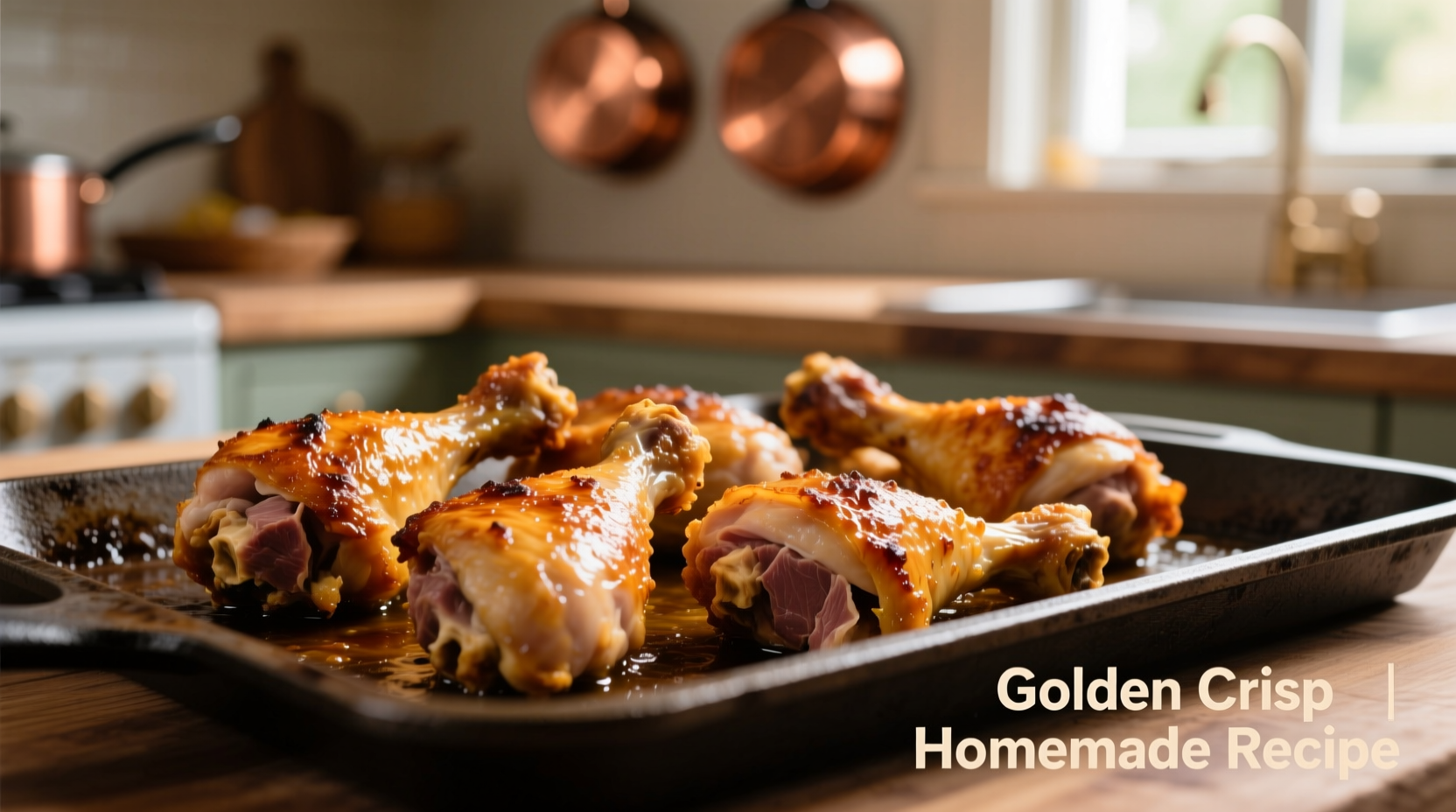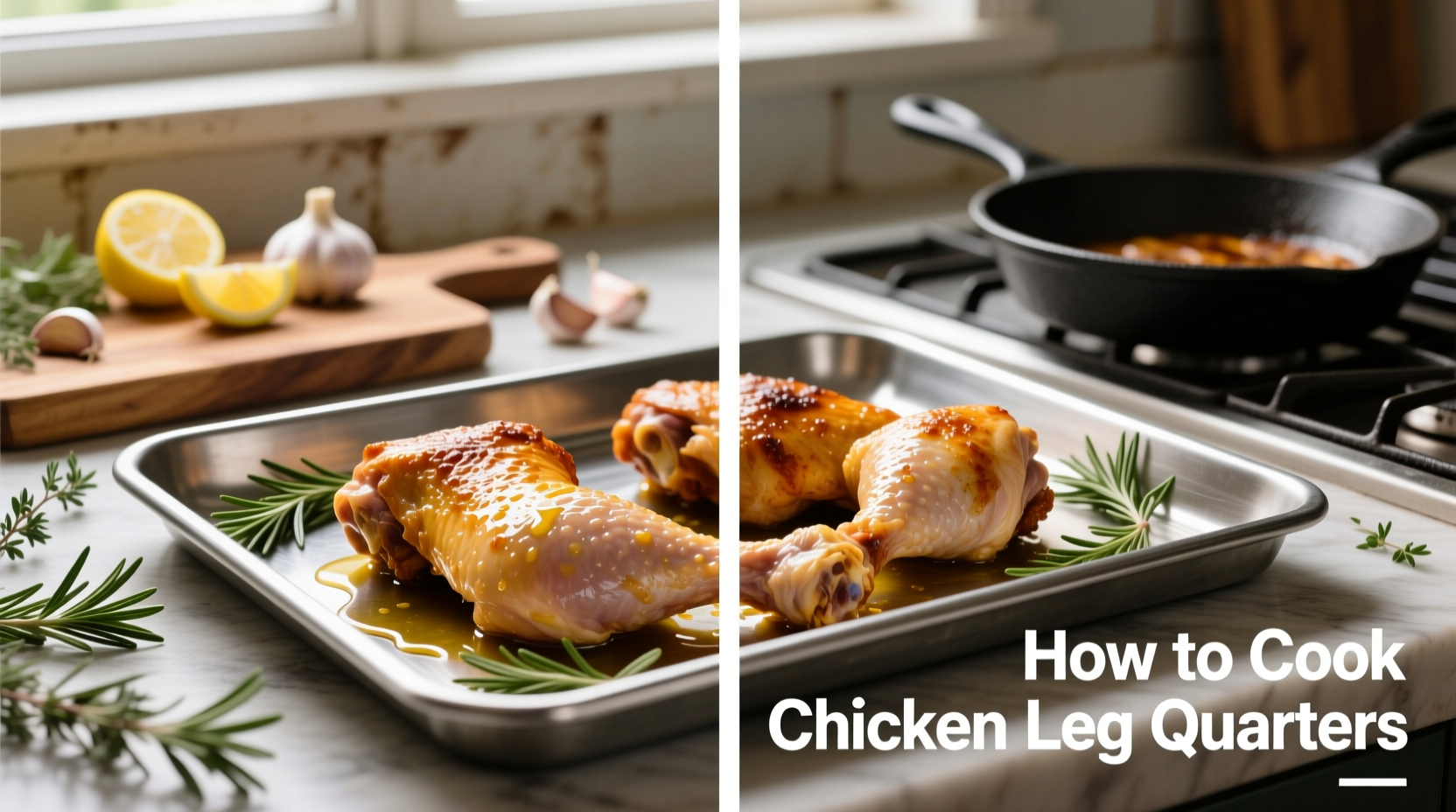Perfectly cooked chicken leg quarters reach an internal temperature of 165°F (74°C) with crispy skin and juicy meat. This guide delivers professional techniques for oven roasting, grilling, and air frying with precise timing charts, flavor variations, and troubleshooting tips to guarantee success every time.
Chicken leg quarters offer unbeatable flavor and value, yet many home cooks struggle to achieve restaurant-quality results. As a culinary professional with extensive experience teaching home cooks professional techniques, I've refined a foolproof approach that transforms this humble cut into a showstopper. Whether you're cooking for a weeknight dinner or special occasion, these methods deliver consistently crispy skin and succulent meat.
Understanding Chicken Leg Quarters
Chicken leg quarters consist of the drumstick and thigh connected as one piece, offering the best of dark meat's rich flavor and tenderness. Unlike boneless cuts, the bone-in structure retains moisture during cooking while the higher fat content prevents drying out. According to USDA nutritional data, a 4-ounce leg quarter provides 23 grams of protein with essential B vitamins and minerals, making it both nutritious and economical compared to breast meat.
| Cooking Method | Temperature | Time (3-4 lbs) | Skin Crispiness |
|---|---|---|---|
| Oven Roasting | 425°F (220°C) | 40-45 minutes | ★★★★☆ |
| Grilling | Medium indirect heat | 35-40 minutes | ★★★☆☆ |
| Air Frying | 400°F (205°C) | 28-32 minutes | ★★★★★ |
| Slow Roasting | 325°F (165°C) | 55-60 minutes | ★★☆☆☆ |
Preparation: The Foundation of Success
Proper preparation makes the difference between soggy skin and shatteringly crisp perfection. Start by patting the chicken completely dry with paper towels—moisture is the enemy of crispiness. For enhanced flavor and moisture retention, apply a dry brine: rub 1 teaspoon of kosher salt per pound of chicken and refrigerate uncovered for 12-24 hours. This technique, recommended by the Culinary Institute of America, seasons the meat deeply while drawing out surface moisture.
When seasoning, remember that fat carries flavor. Massage oil or melted butter under the skin and over the surface before applying your spice blend. For classic herb-roasted chicken, combine 2 tablespoons olive oil with 1 teaspoon each of dried thyme, rosemary, and garlic powder. Professional kitchens often add a pinch of baking powder to the seasoning mix—it raises the skin's pH level, accelerating the Maillard reaction for deeper browning.

Oven Roasting Method: Step-by-Step
This foolproof oven method delivers consistently excellent results:
- Preheat oven to 425°F (220°C) with rack in the upper third position
- Arrange leg quarters skin-side up on a wire rack set over a baking sheet
- Roast for 20 minutes, then rotate the pan for even cooking
- Continue roasting 20-25 minutes until internal temperature reaches 165°F (74°C)
- Rest for 10 minutes before serving—the temperature will rise 5-10 degrees
The USDA Food Safety and Inspection Service emphasizes that poultry must reach 165°F internally to eliminate harmful bacteria (USDA FSIS guidelines). Always use an instant-read thermometer inserted into the thickest part of the thigh without touching bone. Visual cues like clear juices and golden-brown skin aren't reliable indicators of doneness.
Context-Specific Cooking Techniques
Not all cooking methods work equally well in every situation. Understanding these context boundaries prevents kitchen disasters:
- Grilling limitations: Avoid high direct heat which burns seasoning before meat cooks through. Use two-zone setup with leg quarters positioned over indirect heat
- Air fryer considerations: Reduce cooking time by 20% compared to oven roasting and shake the basket halfway through for even crisping
- Humidity impact: In humid climates, extend the initial drying time by 15 minutes or add 1/2 teaspoon cornstarch to seasoning to absorb moisture
- Frozen chicken: Never cook frozen leg quarters without thawing—they'll steam rather than brown. Thaw in refrigerator for 24 hours before cooking
Flavor Variations for Every Palate
Master these professional variations to keep meals exciting:
Smoky Paprika Version
Mix 2 tablespoons smoked paprika, 1 tablespoon garlic powder, 2 teaspoons onion powder, 1 teaspoon cayenne, and 1 tablespoon brown sugar. The sugar caramelizes for beautiful color while smoked paprika adds depth without liquid smoke's artificial taste.
Lemon-Herb Marinade
Combine 1/4 cup olive oil, juice of 2 lemons, 3 minced garlic cloves, 2 tablespoons chopped fresh rosemary, and 1 tablespoon Dijon mustard. Marinate 4-12 hours for bright, aromatic flavor that penetrates the meat.
Troubleshooting Common Issues
Even experienced cooks encounter these problems—here's how to fix them:
- Skin not crisping: Pat dry again and return to oven for 5-8 minutes at 450°F. Alternatively, finish under broiler for 2-3 minutes watching closely
- Uneven cooking: Position thicker thigh portions toward oven back where heat is typically stronger
- Burnt seasoning: Reduce oven temperature by 25°F and tent exposed skin with foil during final cooking stage
- Dry meat: You've likely overcooked. Always remove at 160°F—carryover cooking will reach safe 165°F during resting
Serving and Storage Tips
Serve with roasted vegetables or creamy mashed potatoes to complement the rich flavor. For leftovers, store in airtight container for up to 4 days. Reheat in 350°F oven for 15 minutes rather than microwave to preserve texture. Leftover meat makes exceptional chicken salad or pot pie filling—simply remove skin and bones before chopping.
Frequently Asked Questions
Can I cook chicken leg quarters from frozen?
No—cooking frozen leg quarters results in uneven cooking and poor texture. Always thaw completely in the refrigerator for 24 hours before cooking for best results.
Why is my chicken skin soggy?
Moisture on the skin surface prevents crisping. Pat thoroughly dry before seasoning and consider dry brining overnight to draw out moisture. Avoid covering during cooking.
How do I know when chicken leg quarters are done?
Use an instant-read thermometer to verify 165°F internal temperature in the thickest part of the thigh. Visual cues like clear juices aren't reliable indicators of safety.
Should I flip chicken leg quarters while cooking?
No—cooking skin-side up throughout prevents moisture loss. Flipping disturbs the crisping process and can cause sticking. For grilling, flip only once when skin shows grill marks.











 浙公网安备
33010002000092号
浙公网安备
33010002000092号 浙B2-20120091-4
浙B2-20120091-4